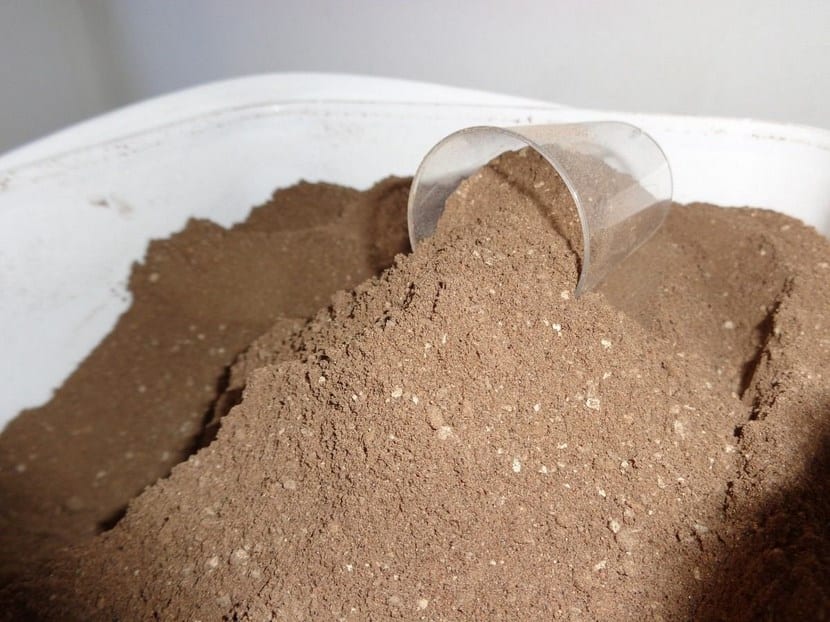
Do you live near the coast? Is the soil in your garden sandy and where you live is hot? If you have answered yes to any of these questions, one of the plants that will best adapt to your area is the ephedra fragilis, which produces very decorative flowers.
It is very easy to take care of, since as we are going to see, as long as it has sun and some water its growth and development will be adequate. So, What are you waiting to meet her?
Origin and characteristics

Our protagonist is a dioecious shrub (there are female and male specimens) whose scientific name is ephedra fragilis and which is known as ephedra. It is native to the Mediterranean region, found mainly in North Africa and Southeastern Europe, including Spain and Portugal. It reaches a maximum height of two meters, and is highly branched.
The stems it has are erect, thin and photosynthetic (that is, they do photosynthesis). From them sprout whorled scaly leaves measuring about 2mm. The male flowers are grouped in globose and rigid inflorescences, composed of bracts and are solitary; female inflorescences are usually grouped in pairs. In both cases they are yellow. The pseudofruit measures 8x3mm, has an elongated ellipsoidal shape and its seeds are covered by red or yellow bracts.
Varieties
There are two subspecies:
- Ephedra fragilis subs. fragilis: lives in the western regions of the Mediterranean.
- Ephedra fragilis subsp. campylopoda: lives on the Balkan Peninsula.
What are their cares?
If you want to have a copy, we recommend providing the following care:
Location
You have to place your Ephedra fragilis outside, in full sun. It does not have invasive roots, but like practically all plants that live on the coasts, it can grow very long, but they will be superficial.
Earth
- Flower pot: universal culture substrate mixed with 30% perlite. Another option is to mix 60% akadama with 40% mulch, especially if it rains a lot in your area.
- Garden- Will grow well in calcareous, chalky soils or saline sands.
Irrigation
The watering of this plant should be moderate, that is, you do not have to water every day but do not let the soil dry out either. In general, it should be done about 3 times a week during the hottest time of the year, and every 4-5 days the rest.
If the water is very, very hard (with a pH of 8 or higher), it is important to first add a tablespoon of vinegar to 5l of water to lower that pH, and thus avoid mineral deficiencies in the plant.
Subscriber

Guano powder.
Plants need water to live, but also 'food'. And, in the same way that people would not live long drinking only water, plant beings will not get very far if their roots do not absorb nutrients from the soil on a daily basis.
But beware, this does not mean that you have to pay every day, but that we must make sure that there are always nutrients in the soil or in the substrate. How do you do that? Feeding whenever necessary. If we use chemicals, the same container will tell us how often to pay, but if we use natural -something highly recommended, by the way-, we will have to do it once a month.
Multiplication
La ephedra fragilis multiplies by seeds in spring, although it is preferable to sow them in autumn which is when they finish maturing. The step by step to follow is as follows:
- First, we will fill a pot with universal growing substrate.
- Afterwards, we water conscientiously, making sure that it is well soaked.
- Then, we spread the seeds on the surface, ensuring that they are a little separated from each other.
- Next, we cover them with a thin layer of substrate. and we water again, this time with a sprayer.
- Finally, we place the pot outside, in semi-shade. We can put a plate under it so that the remaining water remains on the plate and can be absorbed by the earth.
Thus, the seeds will germinate in two months approx.
Plagues and diseases
It's very tough, but if the growing conditions are not suitable, it can be affected by cottony mealybugs if the environment is very dry and you are thirsty, or because of fungi if, on the contrary, it is very humid. In the first case, we can remove them by hand or with a brush soaked in pharmacy alcohol, and in the second we will treat Ephedra fragilis with fungicide following the instructions specified on the package.
Planting or transplanting time
The ideal time to land is in spring, when the risk of frost has passed.
If we have it in a pot, we will transplant it every two years, also during the flower season.
Rusticity
It easily withstands cold and frost of up to -6ºC.
What uses does it have?
Ornamental
It is a very decorative plant, which can be had in a warm temperate garden or patio. Whether used as an isolated specimen or in groups, having it is always a source of pride 😉.
Medicinal
Ephedra extract is used in natural medicine to treat respiratory diseases such as asthma, but before starting any treatment you should consult a doctor.
Direct intake of the plant is dangerous, as it contains alkaloids that can lead to seizures, strokes, heart attacks, and even death.

And with this we are done. What did you think of ephedra?